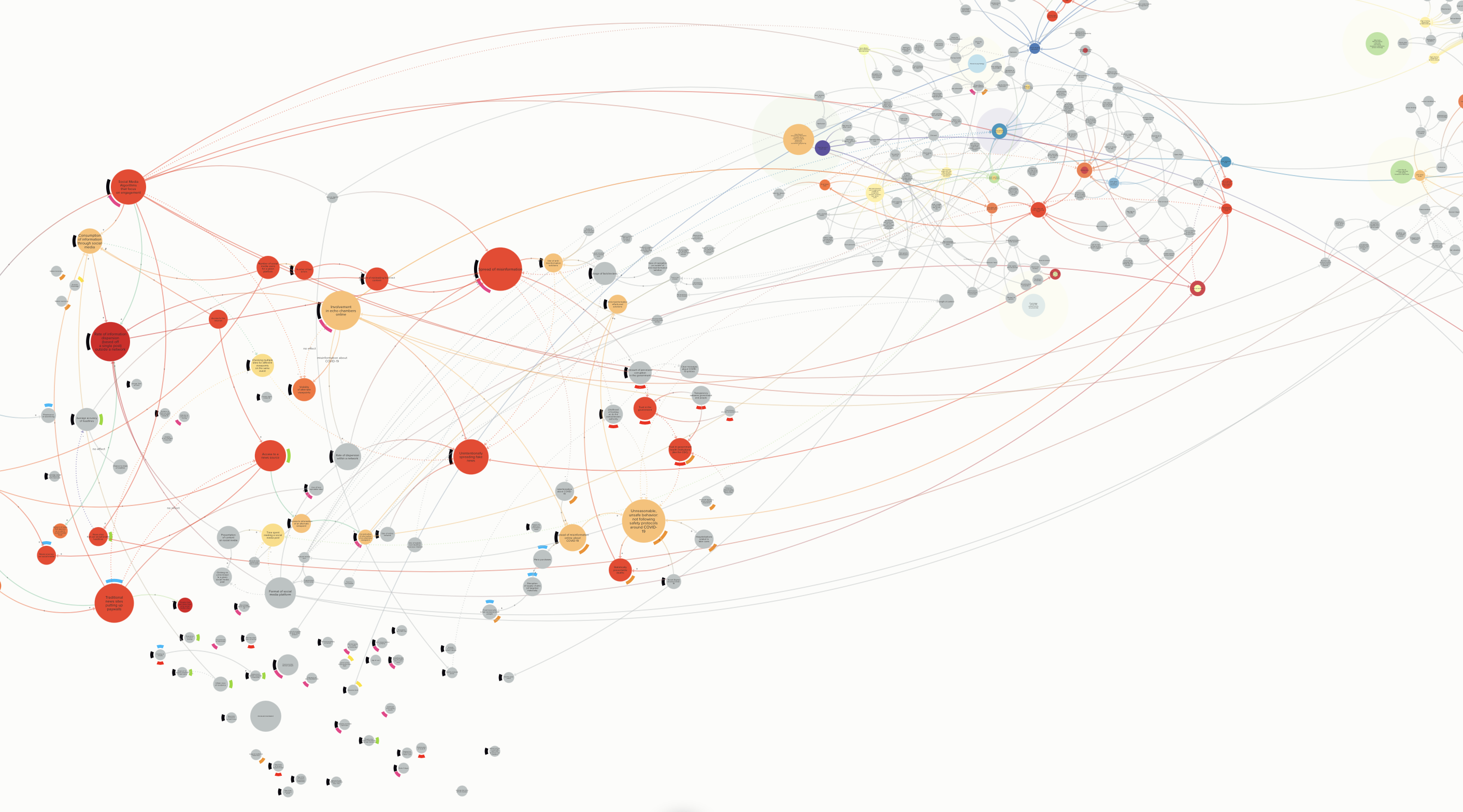Summary
I’m part of a very early project to build what’s essentially a visual Wikipedia for organizations working on wicked problems. The goal is to help them:
- consolidate knowledge
- highlight disagreements and knowledge gaps
- pinpoint effective solutions within a complex system
Here’s the very rough landing page. I was told EA might find it interesting, so I’d love any feedback, advice, pointers to those who might find it useful, etc.. We’re still not sure if it’s worth building, so any thoughts would be appreciated.
Motivation
Why can't everyone agree on the best solution(s) to a problem that's received so much research and so many resources?
Making your altruism effective requires a strong understanding of why hard problems are the way they are and what makes them so hard--essentially, understanding the complex systems behind them. One issue is that not everyone has a detailed enough understanding of their issue to figure out an effective solution.
Though there is plenty of publicly available research and reports, insights are scattered. Each organization comes up with its own insights and its own conclusions of how to best tackle the problem, even when collaborating or using others' research. Often that's effective enough, but often efforts are duplicated, fruitless, or both, or contradict those of another organization. It's possible that there's some important factor that isn't investigated by anyone.
Proposal
What if each organization could access the insights of all others working on the same problem? What if the insights of every organization were connected to give a full picture of a wicked problem?
Diagrams like these are a common way to visualize and analyze the systems behind wicked problems:

So as a solution, we propose a platform for researchers, institutions, charities, etc. that does the following:
- Have Wiki-style page for each wicked problem.
- But instead of text, visualize each problem as a system map like above: X causes Y, Y causes Z, etc.
- Highlights important nodes or "choke points" in the system.
- Supports each connection with linked sources.
- Allows and highlights disagreement over connections.
In order to:
- Help people analyze their own insights more accurately and combine them with others'.
- Offer a central, consolidated knowledge base for understanding important issues.
- Reduce the time and effort needed in starting a new initiative or project from scratch.
- Be more specific in identifying areas that need further investigation.
- Pinpoint effective solutions within a complex system.
Final Notes
We are confident we can build this tool, but first, we want to answer the question of whether it's worth building in the first place. Again, here is the landing page, which basically states what I described here more concisely.
Any thoughts, advice, or pointers to those who may find it valuable are welcome! Our goal right now is to gauge how useful this could be.

This seems more likely to be worth building if you have a large organization/client who will use it (and you might know this if they offer to pay you to build it.) Otherwise I would be more skeptical.